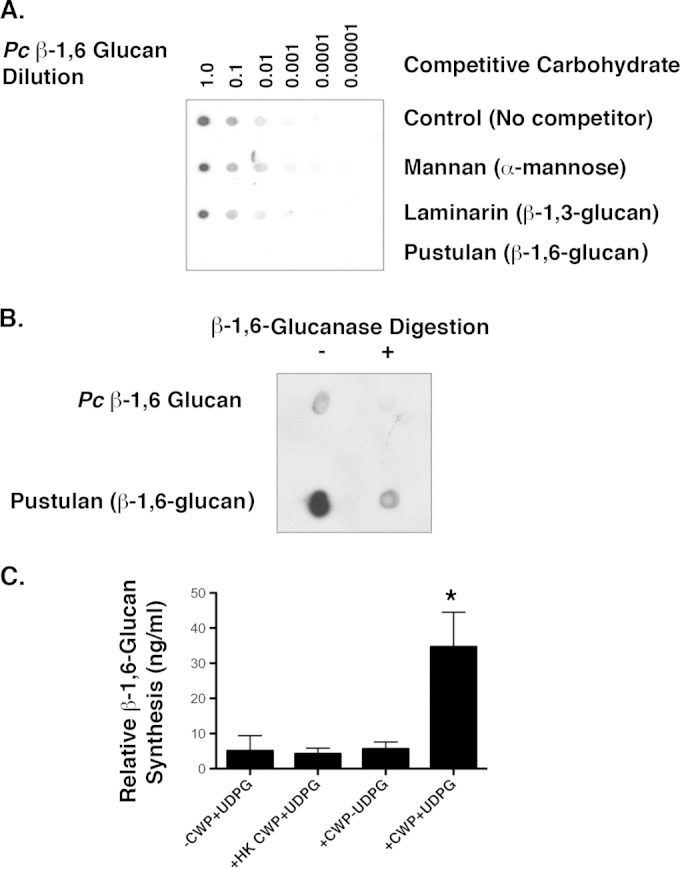FIG 6.

P. carinii contains a β-1,6 glucan cell wall fraction. (A) β-1,6 Glucan dot blot assay comparing the abilities of various carbohydrates to compete with a P. carinii β-1,6 glucan-enriched cell wall fraction immobilized onto nitrocellulose for detection with a specific anti-β-1,6 glucan antibody. Cell wall material was serially diluted onto the membrane. The primary anti-β-1,6 glucan antibody was incubated with the competitive polysaccharides before being applied to the nitrocellulose membrane. The blots were incubated for 1 h, washed, and incubated with secondary goat anti-rabbit-HRP. Only the known β-1,6 glucan pustulan successfully competed with the P. carinii cell wall isolate to eliminate detection by the antibody. (B) The P. carinii β-1,6 glucan cell wall isolate and pustulan were digested with β-1,6 glucanase overnight. The P. carinii β-1,6 glucan was largely digested by the β-1,6 glucanase. Pustulan was also largely (though not completely) digested by the β-1,6 glucanase. (C) Finally, P. carinii CWP were demonstrated to generate β-1,6 glucan polysaccharide in the presence of UDP-glucose (UDPG), as measured by IEIA. Heat-killed P. carinii cell wall preparations (HK CWP) did not exhibit significant β-1,6 glucan synthesis activity (P < 0.05 by one-way ANOVA across all groups). *, P < 0.05 by unpaired Student's t test comparing UDPG-driven β-1,6 glucan synthesis from viable CWP in the presence and absence of UDPG. The data are expressed as means and standard errors of the mean (SEM) derived from multiple experimental runs.
